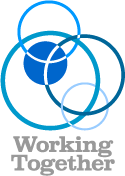Community Development
Community Development in a Library Context
Community Development as a concept and approach has a long history in Canada and elsewhere. In the last few years though it has re-emerged as part of an arsenal of community engagement strategies used by groups and individuals as varied as police forces, municipal governments, medical associations and social activists.
The HRSDC Community Development Handbook written by Flo Frank and Anne Smith defines community Development as…
…a process whereby community members come together to take collective action and generate solutions to common problems.
Another definition is from the General Secretary of the United Nations, written in 1955…
Community Development can be tentatively defined as a process deigned to create conditions of economic and social progress for the whole community with (the whole community’s) active participation and the fullest reliance on the communities initiative.
Now, there are no absolute definitions of Community Development and rarely does everyone agree on the exact wording, or the terms, that are most commonly used to define the concept.
What people do agree on though are the underlying principles of Community Development techniques and a Community Development philosophy. These are that….
Community Development is based on connecting, consulting and collaborating with all community members in order to build and strengthen communities.
So what does this mean for the library’s vision and mandate and policies? And what does it mean in terms of the techniques librarians use to design and develop programs and services?
After all, we are not community developers any more than we are social workers, school teachers or surrogate parents.
In a traditional Community Development model, community developers work with groups of people to help them reach their stated goals, and these goals could be anything from lobbying local politicians for traffic lights, to providing more public washrooms in a community, to mobilizing community members to participate in a community garden or art project.
In a library context, librarians work with people or groups of people so that we can understand what people need from the library in order for them to build a satisfying life. For some people, this might be expressed as reaching their goals. Community Development in a library context is not simply working with people to reach their goals, but working with them to understand how the library can help them reach their goals.
In a library context Community Development means building relationships with people allow the library to go beyond a simple consultation and support process and expand in to meaningful and inclusive collaborations. Strong relationships and partnerships ensure that libraries engage in the sometimes complex process of listening to community voices and facilitating the expression of a community’s needs within the library.
Community Development in a library context also emphasizes learning from the community and adapting library programs, services, and policies to meet the community’s stated needs.
The single biggest difference between a traditional Community Development model and a library-based Community Development model is that libraries want to develop with communities and want community collaborations to inform and guide the programs, services, and policies that libraries develop and create.


